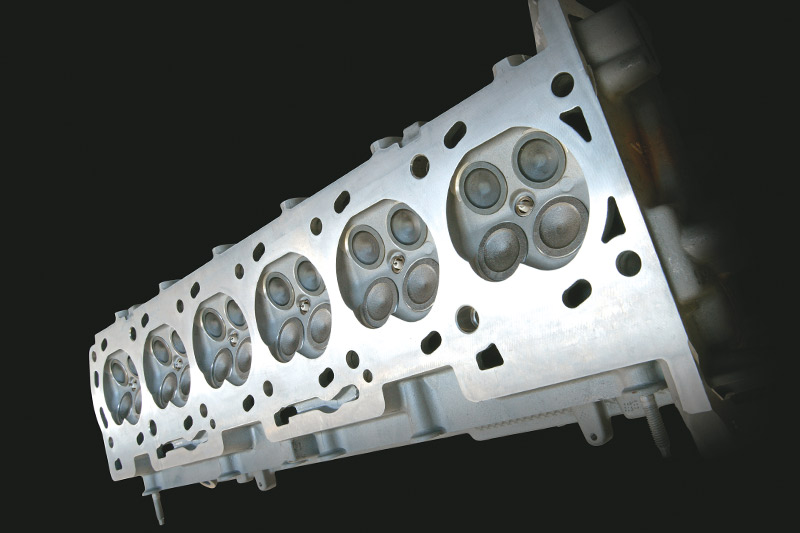Cylinder Configuration - Inline vs 'V'
 Ford hit the mark with the mighty V8 'Cammer'
Ford hit the mark with the mighty V8 'Cammer'


|
|
Ford hit the mark with the mighty V8 'Cammer'
|
Get in line for the 'V' debate
First published in Unique Cars #286, May/Jun 2008
To Vee or not to Vee...
Road rage has nothing on the carnage that can occur when a couple of opinionated blokes get caught up in block rage, that little publicised but dangerous condition that occurs when proponents of inline and ‘V’ engines meet face-to-face.
I have seen sane and sensible guys all but frothing with rage when someone dares suggest that an inline block is better than a ‘V’, or vice-versa. The only thing that’s going to stop them coming to blows is if someone else unwittingly stumbles into the conversation and suggests that the flat engine configuration or a rotary is better.
We’ll leave the pros and cons of the flat and circular motors for another day, because the two most powerful letters in the block rage alphabet are ‘I’ and ‘V’.
The debate can take part in all sections of motordom, such as between the owners of BMWs, whose maker generally prefers inline engines, and Mercedes, which is now big on ‘V’s, but used to like inlines.
 Dodge opted for a massive V10 for its Viper
Dodge opted for a massive V10 for its Viper
It may be between Falcon (inline) and Commodore (V6) owners, or even within the Aussie Ford family itself, as in XR6 owners (inline six) who insist that XR8s (V8) are a waste of road space.
So what’s the truth of it all? What are the advantages of the two layouts and, at the end of the drive, which one’s best?
The basics: inline engines have their cylinders arranged in a single row. It’s a common arrangement for up to six cylinders.
‘V’ engines have their cylinders arranged in two banks, at an angle to one another.
‘V’ engines have appeared with as few as two and as many as 24 cylinders, but their overwhelming use today is for six or eight cylinders, with a sprinkling of V10s and V12s at the upper end.
The type of car being designed strongly influences the engine configuration. A small econobox will almost certainly use a sideways-sitting inline four, because it takes up so little room.
But a peppy family car might benefit from a six-cylinder engine and a compact V6 may be the ticket. If the designers like the idea of a longer bonnet on the same sort of car, they may go for an inline six.
An inline engine may be lighter than a ‘V’ equivalent, an important consideration when distributing vehicle weight and pruning the fat for maximum efficiency.
 Falcon 24v inline 'six'
Falcon 24v inline 'six'
Not lost on the bean counters is that a straight engine may be cheaper to build. Its cylinder bank can be milled from a single casting and it requires one fewer cylinder head and set of overhead camshafts.
Inlines have ruled the four-cylinder world, with flat fours a distant second. A few V4s have also appeared in mass-market cars.
Both ‘V’ and inlines have shared the six-cylinder world since the V6 was introduced by Lancia in 1950. But nowadays the V6 has become dominant. Although perhaps not as naturally smooth as an inline six, the ‘V’ is shorter and lower, so it’s a better fit for many of today’s cars.
Often, cars designed primarily for an inline four can also take a compact V6, allowing a much wider model range. The more models a manufacturer can spin off a basic design, the better for its bottom line.
Volkswagen and earlier Lancia, have attempted to combine advantages of the straight and ‘V’ configurations by building a narrow-angle ‘V’ that’s more compact than either configuration.
And the big question? Sorry, you’re not going to draw this columnist, who is not completely mad, into the debate over which configuration is the best. It’s too comfortable and much safer just sitting on the fence.
Unique Cars magazine Value Guides
Sell your car for free right here
Get your monthly fix of news, reviews and stories on the greatest cars and minds in the automotive world.
Subscribe

.jpg)











